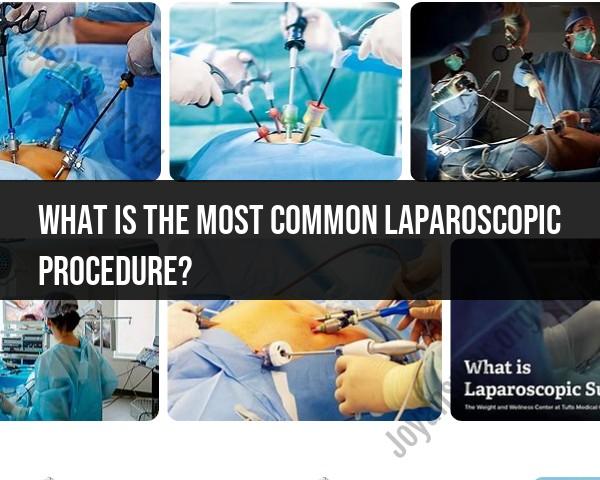What is the most common laparoscopic procedure?
Laparoscopic cholecystectomy, the surgical removal of the gallbladder, is one of the most common laparoscopic procedures worldwide. It's performed to treat gallstones, inflammation of the gallbladder (cholecystitis), or other gallbladder-related issues.
The laparoscopic cholecystectomy involves making several small incisions in the abdomen through which specialized surgical tools and a camera (laparoscope) are inserted. The surgeon uses these instruments to visualize the gallbladder and surrounding structures, and then removes the gallbladder with minimal trauma to the abdomen.
The laparoscopic approach for gallbladder removal has become the standard practice due to its advantages over traditional open surgery, including shorter recovery times, reduced post-operative pain, smaller incisions, and shorter hospital stays.
While laparoscopic cholecystectomy is one of the most common laparoscopic procedures, there are many other laparoscopic surgeries performed for various conditions, including appendectomies, hernia repairs, gastric bypass surgeries, ovarian cyst removal, and more. The choice of procedure depends on the patient's condition and the surgeon's recommendation.
Identifying the most frequently performed laparoscopic procedure
Determining the absolute most frequently performed laparoscopic procedure globally is a bit tricky, as data can vary depending on region, healthcare systems, and specific specialties. However, some strong contenders consistently rank high across various studies and reports:
1. Cholecystectomy: Removal of the gallbladder, often due to gallstones, is a highly common laparoscopic procedure. Its minimally invasive nature and relatively quick recovery make it a preferred approach in many cases.
2. Appendectomy: Removing the appendix, typically due to appendicitis, is another frequent laparoscopic procedure. Its simplicity and effectiveness make it a well-established approach for this common abdominal issue.
3. Diagnostic laparoscopy: This exploratory procedure allows surgeons to visualize the abdominal cavity using a laparoscope to diagnose various conditions, including pelvic pain, infertility, or internal injuries. Its versatility and minimally invasive nature make it a popular choice for diagnostic purposes.
4. Hernia repair: Laparoscopic repair of inguinal, umbilical, or hiatal hernias is a common procedure, especially for adults. Its advantages over traditional open surgery, such as faster recovery and reduced pain, contribute to its frequent use.
5. Fundoplication: This procedure addresses gastroesophageal reflux disease (GERD) by strengthening the valve between the esophagus and stomach. Its laparoscopic version offers benefits like reduced scarring and faster recovery, making it a popular choice for GERD patients.
Other frequently performed laparoscopic procedures:
- Salpingectomy/oophorectomy: Removal of one or both fallopian tubes and/or ovaries, often for gynecological reasons.
- Adhesion lysis: Breaking up scar tissue in the abdomen, often due to previous surgeries.
- Liver biopsy: Taking a tissue sample from the liver for diagnostic purposes.
- Partial nephrectomy: Removal of a portion of the kidney, often for tumors or other issues.
Remember, the frequency of specific procedures can vary based on factors like demographics, healthcare access, and surgeon expertise. However, the procedures mentioned above consistently rank among the most commonly performed laparoscopic surgeries globally.
If you're interested in learning more about a specific laparoscopic procedure, feel free to ask! I'm happy to provide more information based on your interests.












